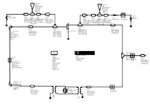LeThalois
Newbie level 6
hello every one.
I find no words to describe my situation.
there is 2 months that I am designing a DRO oscillator in microstrip technology at 10 GHz
I tried the following figure, but in vain.

Please, help me, soon my academic defense and I have done nothing yet.
if you know a schema, a list of steps, I would be very happy even with a single encouraging word.
thank you with all my heart.
I find no words to describe my situation.
there is 2 months that I am designing a DRO oscillator in microstrip technology at 10 GHz
I tried the following figure, but in vain.

Please, help me, soon my academic defense and I have done nothing yet.
if you know a schema, a list of steps, I would be very happy even with a single encouraging word.
thank you with all my heart.
